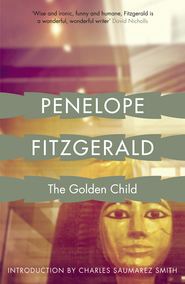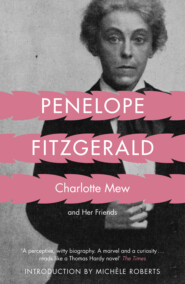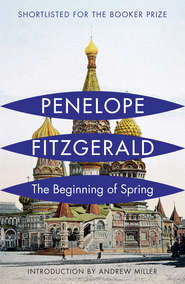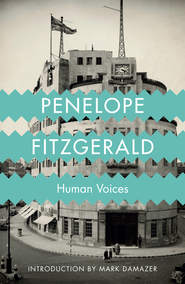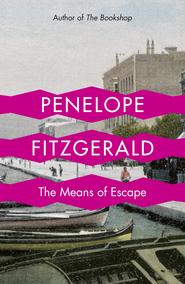По всем вопросам обращайтесь на: info@litportal.ru
(©) 2003-2024.
✖
So I Have Thought of You: The Letters of Penelope Fitzgerald
Настройки чтения
Размер шрифта
Высота строк
Поля
The Gate of Angels was the fourth of Penelope’s books to be shortlisted for the Booker, and it was on three other shortlists. Though it did not win, it received wonderful reviews, especially from other writers, and sold very well. Much was now expected of her. It was extraordinary enough to have started on a literary career so late, to have run it entirely on her own terms, only writing what she chose, never faltering either in excellence or variety; but perhaps the most remarkable thing of all was that her next and last novel, published when she was seventy-eight, should have been generally hailed as her masterpiece, and, despite its complexity and intellectual scope, become a bestseller on both sides of the Atlantic.
If The Blue Flower is certainly a novel and a work of the imagination, it is a most original one in that its hero and most of its characters were real people, yet it transcends the genres of biography and historical fiction: it seems to be an enquiry into what it means to be alive. With imperfect German but great concentration on what was germane to her artistic purposes, Penelope studied Mähl and Samuel’s Complete Works, Diaries, and Letters (including letters to him) of Novalis, the Romantic poet. It took her two years, and gave her ample material to write the story of his tragically curtailed life, if that had been her intention, but it wasn’t. What fascinated her was the blue flower itself. She is on record as saying that in an ideal life she wouldn’t have gone to Oxford to read English, but would have become an artist. Much of her writing in World Review (and her first book, Burne-Jones) was on art. In the ‘70s, one of her many projects was a book on flower symbolism in the original pre-Raphael painters of the Quattrocento. In this she saw a Christian mysticism that went to the heart of her beliefs. It appears from the very chaotic drafts of The Blue Flower in her archive in Texas (where also is the folder on flower symbolism) that she wanted to incorporate the anachronical story of the discovery of the blue poppy in the high Himalayas in the early twentieth century by Colonel Eric Bailey – from whom it derives its botanical name, Meconopsis Baileyi – and a mysterious Jesuit priest. All this is the pollen that led her to the poet Novalis and his incomplete mystical novel Heinrich von Ofterdingen, the beginning of which she quotes teasingly in the wonderful seventeenth chapter ‘What is the Meaning?’: ‘…I long to see the blue flower…’ In Novalis, the flower is a remnant of the golden age when plants and animals spoke and told their secrets to mankind. In a dream he sees it mutate into a sweet girl’s face: ‘Du hast das Wunder der Welt gesehen.’ You have seen the wonder of the world.
Fritz, the young poet who has not yet rechristened himself, but is already for those around him a genius in whose presence ‘everything is illuminated’, finds his meaning and wisdom in Sophie, an absolutely ordinary Saxon girl, yet one who has moral grace, whose likeness cannot be taken, who is indefinable. If love is the answer to the first question expressed as a chapter-heading, how is it altered by the second: ‘What is pain?’ Sophie has ‘opened the door’ to Fritz, but now she succumbs to tuberculosis, undergoes appalling operations without anaesthetic, dies. Fritz is of little comfort or practical help to her during this time, though after her death he takes the symbolic name Novalis and writes his great philosophical poem Hymns to the Night in her memory.
Almost incidentally to its high themes, The Blue Flower recreates the whole fabric of life in eighteenth-century Prussia, food and drink, taxes and laws, roads, landscape, seasons, philosophy and salt mining, and establishes the characters of the twenty or so people closest to Fritz in the course of his bildung, with their own concerns and point of view, characters at every stage of development, so that for every reader there is one who speaks to his or her heart. Inexplicably it missed every British prize list when it came out in 1995, but the reviews were outstanding, again especially from other writers, and in the end-of-year round-ups it was book of the year, with 25 mentions, and went on to sell 25,000 copies in hardback.
Stuart Proffitt, Penelope’s editor for her last four novels, did much to promote and advance her career, and her gratitude to him (and their warm friendship) is evident in the letters that survive. Her dream had been to be published in paperback, and this was realised with the advent of Collins’ Flamingo imprint. It meant even more to her to see a stranger reading one of her books, and laughing at one of her jokes on the tube – a modest ambition perhaps, but one achieved. Her letters to Stuart demonstrate his devotion and kindness. She was distressed when he felt obliged to leave HarperCollins on a matter of principle not unconnected with the new owner. Still, Flamingo’s excellent care of her continued under the new team of Philip Gwyn-Jones, Karen Duffy and Mandy Kirkby. They found time to escort her to the readings, signings, events and festivals, which she was becoming too frail, and would have been too shy, to attend alone. Another devoted editor who was to achieve much for her now came back into her life.
Several publishers, including the redoubtable Nan Talese at Doubleday, had already attempted to ‘break’ her in America, without great success. It was feared, and Penelope herself thought, that she was ‘too British’. Chris Carduff had returned to publishing after some years spent editing The New Criterion, and was now employed at the Boston firm of Houghton Mifflin. He persuaded his boss, Janet Silver, to publish The Blue Flower in the US in 1997. It received a most enthusiastic and erudite review from Michael Hoffman, the lead and front cover of the New York Times Books section. That year for the first time the National Book Critics Circle Award was opened to foreign authors and Penelope won it, beating Roth’s American Pastoral, DeLillo’s Underworld and Charles Frazier’s Cold Mountain. She particularly appreciated winning this prize, as it is judged by 700 book reviewers. There was some grumbling, as at her Booker Prize, for here again she was an unknown David against Goliaths, but it was politer, and soon to be silenced by a chorus of praise. The Blue Flower went on to sell 100,000 copies, and all her other novels followed it into print in America, permitting a timely retrospective of her career. Each of her books was admiringly reviewed as somebody’s favourite. The Bookshop, in particular, after twenty years, but recapturing the 1950s, was now recognised as a British classic.
In fact her novels had brought back all the periods of her active non-writing life, of her long literary silence. Human Voices described her young woman’s war service at the BBC, and the unique role that institution played in the upholding of truth and the national spirit in those years; Innocence recalled the 1950s, her young married years, when she was publishing Alberto Moravia and the younger Italian writers in World Review; The Bookshop, the failure of her early literary hopes and experiment in country-living in the late 1950s; Offshore, so redolent of the early 1960s and London’s river, her lowest point; At Freddie’s, her first teaching job, and the London stage in the days before the National Theatre, when, incidentally, she was beginning her self-apprenticeship to become a writer. Neither should her last three ‘historical’ novels, including The Blue Flower, be assumed to be free of autobiographical elements: Nellie in The Beginning of Spring, Daisy in The Gate of Angels, Fritz’s mother, all have aspects of Penelope, and her child characters always owe much to her own children. In choosing her periods she was chiefly guided, as she declared in interviews, by the wish to write of moments of optimism and ideological ferment, ‘when people really thought things might get better’, when the debates between science and religion, revolution and the unalterable, had not yet apparently ended in atomic bombs, tyranny and unbelief.
From the first, as we see everywhere in these letters, Penelope was most conscientious in undertaking the duties inherent in being a writer of reputation. Though she never enjoyed committees, she worked for PEN, the Arts Council, and later became Fellow of the Royal Society for Literature. A cause near her heart was that biographers should be recognised by grant-awarding bodies as creative writers. She was successful in fighting for this, as in her energetic support of Public Lending Right, which very belatedly ensured that writers were paid for the lending-out of their books by libraries. Her friendships with Francis King, Sybille Bedford and Michael Holroyd originated in this work. She met J. L. Carr, Thomas Hinde, Edward Blishen and A. L. Barker (known as Pat, author of short stories of fine sensibility, not to be confused with the equally estimable novelist Pat Barker) through her tutoring of fiction courses for the Arvon Foundation. She encouraged and advanced the careers of other writers not only through her tireless reviewing (there was almost no English paper she didn’t write for, reviewing regularly for the Evening Standard, the London Review of Books, the TLS, the Tablet, the New York Times and the Washington Post) but also by judging for most of the literary prizes, biography, poetry and fiction, including, twice, the Booker. She argued fiercely for Roddy Doyle’s The Van, and Magnus Mills’ The Restraint of Beasts, managing to get them both onto the respective shortlists. Among other young writers she championed were Glyn Maxwell, Candia McWilliam and Claire Messud. Among those who reviewed her, or whom she reviewed, and who are represented in this collection are Hilary Mantel, the biographer Richard Holmes and Sir Frank Kermode.
From 1995 onwards, as she entered her eighties, though she continued to work as hard as ever, and retained her all her formidable intellectual acuity, Penelope’s health and mobility began to decline. She suffered badly from rheumatism and from the slow weakening of her heart. She was no longer able to get to the British Museum reading room where she had spent so many happy years in research, following the circuitous trails which led to her biographies and later novels. The beautiful round reading room itself closed, and she couldn’t contemplate transferring her affections to the new British Library. Now for the first time she began to complain of a lack of inspiration. It troubled her that she had accepted a generous advance for a new novel, the idea for which stubbornly refused to come to her. In the meantime she wrote, to commission, her wonderful introductions to Emma, Middlemarch and, repaying the debt to friendship, J. L. Carr’s A Month in the Country, and also her amazing last three stories. How to classify her short fiction? Are they fables, parables, folk-tales, poems even? She insisted that each demanded more effort to write than a novel. They range across the whole world in setting, from New Zealand to Tasmania, Mexico, Istanbul (twice), Brittany, Jerusalem (by implication), Iona, far Somerset, the Home Counties, London, and across four centuries.
Though under no external pressure to repay her advance, in 1999 she gratefully accepted her publishers’ suggestion that she collect her stories into a volume. The title, The Means of Escape, was supplied by Janet Silver of Houghton Mifflin, who considered that the story provided a unifying theme, which Penelope doubted, feeling rightly that the stories are as unsettlingly different from one another as are her novels. Two at least of them could have been novels. Christian motifs proliferate throughout them: the uninvited guest, the unfaithful servant, the unawakened soul, the buried talent. There are ghosts and hauntings. There are two great cries of protest: ‘She belonged to the tribe of torturers. Why pretend they don’t exist?’ and ‘Make no mistake, you pay for every drop of blood in your body.’ Yet there is always the faith that good will prevail. Through character or fate, self-knowledge and grace may be gained or regained. There remains, against all odds, the possibility of salvation.
The Means of Escape was written during the concentrated struggle to perfect The Blue Flower. It is rich enough to have become the vicarage novel that Penelope was perhaps always on the verge of writing. The story is characterised by a black humour. Evil uncomprehended by innocence flickers through it – a stench, a hood, an elected silence. The shameless may escape, the dutiful never.
The Likeness was to have been a novel based on the Ionides family from Burne-Jones. It is now a romantic high comedy, based on misunderstanding. The Axe, Penelope’s first published fiction, from 1975, is both a memorably chilling ghost story in its own right and a brilliant ‘take’ on Melville’s Bartleby the Scrivener. At Hiruharama is an example of the anecdote or tall tale, which evades the narrator as it assumes a moral and pictorial solidity of its own. The Prescription is a violent fable about dishonesty. Not Shown hints at an English murder.
Penelope’s three great last stories were written and published in 1997 and 1998. They are absolutely ambiguous; yet there is an urgency to be understood in them. They seem to be about inspiration at different stages of life: the human cost of joy. Desideratus sees a resourceful boy wrest the coin he has been given from the pallid ghost of his weaker self. He must earn his talent through travail. The Red-Haired Girl, unwilling model to an uncomprehending painter, tells him, before she disappears, what he’s missed in his search for the picturesque: ‘You don’t know what I want and you don’t know what I feel.’ In Beehernz, a famous conductor who has become a hermit to block out the noisy music of the world, hears a young woman sing a folk setting of Goethe’s Gefunden: ‘I went in the woodland/Nothing to find’ but it goes on ‘I saw in the shadow/A stone-flax stay’. Too long a prisoner of his mute keyboard, he has recaptured his visionary sense, symbolised by a blue wayside flower, the linseed.
Though all attempts to describe and define a life are doomed to failure, it is tempting to see Penelope’s as describing a dramatic arc from dazzling early success, a promising career as literary editor, a comfortable, if hubristic, establishment in Hampstead, down to destitution and humiliation, the half-way house for the homeless, and thence ever upwards, by dint of hard work, study and inspiration, until at eighty she was at the peak of her achievement, reputation and earnings, passing for the first time, as she ruefully remarks in the letters, into a higher tax bracket. Her one final ambition was to see in the new Millennium. This also she achieved. Several of the series of letters follow her right up to the days before her first stroke, when she was eighty-three, busier than ever, reviewing for papers on both sides of the Atlantic, judging a prize, preparing a new American edition of The Knox Brothers (a family of which she was by now the most remarkable member) and proof-reading her stories, The Means of Escape, for publication by Flamingo and Houghton Mifflin. She survived a month longer, able to talk a little to her children, until she suffered two further strokes and died on 28 April 2000. She is buried in the churchyard of St Mary’s, Hampstead.
It occurred to me, during my researches for this book, to wonder where she worshipped when, at her lowest point, she lived offshore on Grace. The boat is described in the book as being moored on Battersea Reach; in reality it had been moored at Dakin’s yard, World’s End, but directly opposite St Mary’s Battersea. Inside that lovely eighteenth-century church, the first thing that one sees, among a wonderful collection of modern stained-glass windows, Blake and the grain of sand, Turner, Franklin and the promise of happiness, on the left side of the door is a large and beautiful blue flower.
Terence Dooley
A NOTE ON THE TEXT (#ulink_66433d92-2e45-5858-ab00-503d8b87b3ae)
Penelope’s handwriting is clear, graceful and original, her own creation. In her youth it was a simplified italic, each letter carefully formed and rarely joined up to the next. Later, the characters connect more often, though never for a complete word; it gives an artistic impression. It is a pleasure to read and transcribe, because there is never any doubt about what she has written.
Her punctuation has been preserved, with its occasional inconsistencies, or survivals from an earlier era (Mrs: for Mrs), its underlinings for emphasis or titles, its capitals for jokes. The ampersands, which looked so well in the blue ink italic, look like so many snails in black print, therefore they are now and. She wrote thankyou as one word, and I have not altered this.
Individual letters haven’t been cut, save in one or two cases where the fun being had at someone’s expense would never have been intended to be read by that person. She sometimes misspelt names; these have been corrected where possible.
I have kept the correspondences separate, in this way the nuances of the different relationships and the tone of voice may be better appreciated. A rough chronology has been followed in both sections. Penelope rarely included the year in her dates, so internal ordering has been more than usually difficult. It is now as accurate as we can get it, relying on family knowledge and internal evidence.
I. FAMILY AND FRIENDS (#ulink_65389856-e2d4-51b9-b489-4cd63d086f73)
Hugh Lee (’Ham’) (#ulink_17c67ced-c586-5bd1-bda9-a0e755922d8d)
(#litres_trial_promo)
27a Bishop’s Road
London, N6
21 February [c.1990]
Dearest Ham – No-one but you – absolutely no-one – would find any old letters in a suitcase of their father-in-law’s at the bottom of the carcase of an old freezer. You’re someone to whom things happen.
It’s kind of you to suggest that I might write my autobiography but I shan’t do that as I’ve written something about my family already and also about what (in the tedious little talks I sometimes give) I call my work experience – I used to regret that all the letters and photographs we had went down to the bottom of the Thames, but I see now I’m better off without them. The reason is that as my step-mother gets more and more hazy in her nursing-home (but this is a blessing to her, I truly think, because she doesn’t worry as much as she used to do) we’ve brought home all the old papers from her flat and I’m beginning to go through them, and it’s such a sad business, so many forgotten names, so much wasted effort, that I’ve decided I simply mustn’t leave my children to go through what I’ve accumulated, I must give them to the NSPCC who bring a green bag round every week to collect the waste paper.
I don’t know why I’m rambling on like this,
love to you both. – Mops.
I had to change my handwriting because the bank wouldn’t accept my signature
‘PUNCH’
10 Bouverie Street
London, EC4
5 October [1939]
Dear Ham,
I spiritually drank your health the other day by ringing the bell (this is a very well-appointed office) and sending for all the books on ballet from the Art Room and a lettuce sandwich – I read them all through and could now maintain a conversation on the subject with almost anyone – but perhaps as a result of this indulgence I caught ‘flu, and had to take a sinister lightning cold cure which has made me very hazy, and rather the colour of a cream cheese. On the other hand I feel even more sympathetic about your toothache, and about Yorkshire too, I am told the wildernesses literally howl there.
I am waiting in agonies for the reports of Hitler’s speech, as any reference to unknown weapons will hypnotize me with fear. The sub-editor from Lowestoft, who is sitting opposite me, has a permanent flush this morning, and is even glowering.
Putting aside the idea that he has been drinking, I think he has heard something to my discredit, or perhaps suspects me of making advances to him. I have discovered that he is a gadget fiend, and has made a penknife and magnifying glass combined, out of old razor-blades. A magneto would be nothing to him. He is now with angry gestures filling his pipe with tobacco, and I can’t make up my mind whether to warn him that this will make me feel sick – owing to the lightning cold cure – or whether to collapse suddenly on the floor later on, which should teach him a sharp lesson, and prevent his smoking Craven Mixture for some time to come.
In spite of the somewhat ominous news I am in one of my optimistic moods, in which I feel that it will be a short war. Please concentrate on agreeing with this,
love,
Mops.
16 Avenue Close*
Avenue Road, NW8
13 October [1939]
Dear Ham,
This is another letter which you needn’t read if you don’t care to as it only expresses the fact that I am melancholy and terrified of the celebrated Blitzkrieg. I start at noises in the street, sleep with my head under the bedclothes, and listen to the owls hooting – they really do hoot around this block of flats – with gloomy relish. When I get as depressed as this though, I must get better soon, it’s a law of nature – but the really annoying thing is my fondness for doughnuts. An organisation called the British Doughnut Association has sent us a pamphlet announcing that a representative will call at the office with some samples of the new type of doughnut to get our opinion – now this was 3 days ago, and I suspect that the doughnuts have been intercepted either by the Advertising Department or by the publishers, or by the sub-editor from Lowestoft, who is something of a gross feeder – at all events I have seen nothing of them, and I have an unfortunate tendency to pin my hopes to small things.
I haven’t seen Oliver,
(#litres_trial_promo) for he has departed to Cambridge, I think on a bicycle. I admire, and always have admired, the way he quarters the countryside. He ought to be a Transport Officer really,







